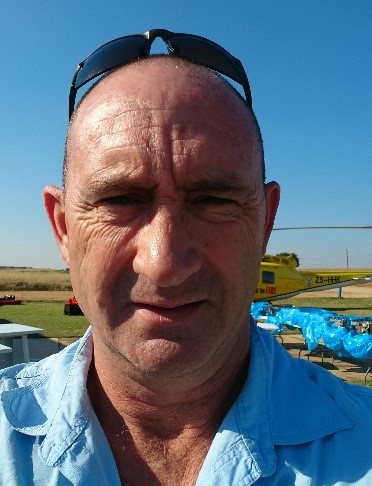Having learned hard lessons from the catastrophic fire in 2015, the Government of Indonesia is now making a concerted effort to shift the paradigm from reactive fire suppression to proactive fire mitigation, with a focus on peat fires. Peat fires have far-reaching consequences, such as social and environmental impacts, haze problems, land loss, reduced water quality, loss of peat carbon stocks and biodiversity reduction.
In the 2015 season alone, fires resulting from poor peat landscape management in Indonesia caused 2.6 million hectares of land to burn. It cost Indonesia an estimated USD $16.1 billion, - the equivalent of 1.9 percent of the country’s GDP in 2015. Noxious haze that blanketed parts of Indonesia disrupted transport, trade and tourism; forced school closures and negatively affected health. According to the World Bank Group, the haze contributed to the deaths of 19 people and more than 500,000 cases of acute respiratory infections. From the 2015 fire episode, immediate health costs totalled USD $151 million. In addition, approximately 15.95 million tons of CO2 emissions were released into the atmosphere daily. By putting an end to these unwanted wildfires, Indonesia could better meet its stated target to reduce greenhouse gas (GHG) emissions by 29 percent by the year 2030.
Globally, peatlands are the world’s largest terrestrial organic carbon stock, and the loss of these systems will have a wide-reaching global impact. Indonesia is, quite literally, sitting on a large portion of this priceless global resource. Housing between 25 and 35 million hectares, the country boasts the third largest peatland area in the world.

Natural peat swamp forests are very fire-resistant because of the high humidity under the closed canopy and the organic sponge that draws the water table up above the local water table level. Unfortunately, in the 1980s, the tropical peat land in Sumatra and Kalimantan were cleared from their natural forest cover due to a failure to understand the complexities of the ecosystem and its inherent fragility caused by the relationship between peat and forest. Once the forest is removed and the peat is drained and exposed to fire, the surface peat oxidises and loses stored carbon rapidly to the atmosphere (as carbon dioxide). This results in the progressive loss of the peat surface, leading to local flooding. In addition, rapid and extensive land use changes by palm oil and industrial forestry concession holders on Sumatra and Kalimantan have extensively drained peat areas further and resulted in increased fire risks.
Integrated Fire Management
The Strengthening Indonesian Capacity for Anticipatory Peat Fire Management (SIAP) project aims to support the Government of Indonesia in delivering Integrated Fire Management (IFM). through a cluster-based approach (internationally called “Fire Protection Associations”). Within the context of support to the Global Peatlands Initiative (GPI), the SIAP project addresses climate change challenges through collective efforts to reduce significant threats to peatland ecosystems and by reducing GHG emissions.
Integrated Fire Management is often misunderstood as being only focused on reaction or response to fires. On the contrary, the reduction and readiness phases are the most important to focus on, as that is where tangible changes are made to behaviour and practices that can result in the reduction of unwanted fires. Full IFM encompasses a multitude of factors that cannot work in isolation, and the communities, which often carry the blame for unwanted fires, are key players in making positive changes.
The cluster-based approach brings together all stakeholders in support of a comprehensive program that ensures adequate resources and systems are in place to address all elements of IFM. This means that all land users in an area, including the Government, private concessionaires and communities, are members of the cluster. It is often the case that individual entities are doing everything in their power to affect change on a relatively micro level, but they may be working in isolation from the bigger macro picture. The cluster system is based on close collaboration, where everyone is working together for a common cause, based on a single integrated fire risk management plan.
A system of “clusters”
The SIAP project facilitates the establishment of prototype Fire Protection Associations (called “clusters” in Indonesia) and builds a solid basis for an integrated environmental mitigation measure for fire risk reduction in Indonesia’s key policies and frameworks. These measures could be considered as an entry point, not only to improve Indonesia’s landscape policies on peat management, but also in building resilience to disaster risk by preventing and reducing environmental impacts to local indigenous people who reside in fire-prone areas.
The initial area of focus will be setting up core clusters in peat fire-prone districts, to later roll out to mineral soil areas. Ultimately, the entire country should be divided into clusters on a district level, with provincial coordination clusters and one national cluster organization to form a single, well-coordinated, country-wide system.
A successful South-South Partnership
The Government of Indonesia is engaged in a South-South partnership with the South African organization Working on Fire/, which brings a science-based approach and its extensive experience with optimizing community benefits and local capacity building. The SIAP project is also supporting the UN-REDD Programme 2019 - 2020 work plan on effective peatland and forest fire management, with peat restoration as a focus of REDD+ policies.
The first phase of the SIAP project is being funded by USAID/OFDA through UN Environment. The Government of Indonesia has called on other development partners to align their projects with the cluster approach and to support further implementation and scaling up.
Looking beyond 2030, with meaningful collaboration and solid systems affecting change, the SIAP project will significantly contribute to reducing threats to health and livelihoods by working towards the achievement of the president of Indonesia policy of zero wildfires in Indonesia.




